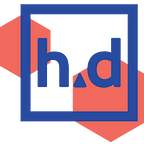3D printing: how ideas go from virtual to tangible
Hack.Chat with Formlabs
“One of the best parts about working at Formlabs is direct access to the guts of the printer. Printers are controlled through an excruciatingly large number of software; if you know how Python works, you can drive the printer in all sorts of interesting ways. Digging into the printing is one of the most satisfying parts of the job, and highly learnable” — Ed Tiekan, Software Lead at Formlabs
When walking into the Formlabs office, it’s hard to miss the R2D2 to the left or intricate model of Steve Jobs’ head to the right. The dozens of 3D-printed objects that line the walls, alongside the bright orange printers welcome newcomers into a space brimming with industrious creativity. The company’s hardware focus is immediately apparent, but how does software come into play? How does Python lead to the physical fabrication of an object? What’s the relationship between QA testing a line of code and altering the facial intricacies of icons like Jobs or Star Wars characters?
On Tuesday, August 21, Hack Fellows had the privilege to peek behind the scenes, and ask these questions, and more, during Hack.Diversity x FormLabs Hack.Chat. The 2-hour discussion covered a breadth of ideas, from how software development influences the 3D printing process, to what it’s like to work at one of Boston’s most innovative and fast growing hardware companies.
Behind the Scenes of 3D Printing
Ed Tekeian, Formlabs’ Software Lead, explained that the applications of software use at Formlabs can be largely broken down into two buckets: marketing and engineering. Software developers on the marketing side are focused on maintaining Formlabs.com, working on e-commerce and developing Salesforce. On the engineering side, PreForm — the technology that takes a virtual model and prepares it for 3D printing — is where developers spend most of their time.
Formlabs engineers are writing, debugging, and iterating their code in both Boston and overseas in Budapest. While a lot of their prototyping is done in Python because it’s quick and easy, once stabilized, the code is transitioned to C++. But there are many steps between writing code and being ready for a public release to ensure that PreForm is market ready.
Through the pull request process, engineers participate in a collaborative feedback loop. In addition to developing a continuous integration between developers and QA, Formlabs had introduced a Public beta where users of their 3D printing technology can test Formlabs’ product at a lower rate. Eventually, once perfected, a new software release is ready to go to market.
Life at FormLabs: firing a lot of lasers, printing a lot of stuff
The role of a software developer at FormLabs is unique: their day-to-day might include manipulating the trajectory of a laser or testing their code through physical print.
Interns at Formlabs perform a wide range of functions, and take on projects that have long-standing impact. One PreForm intern implemented a new print option: “mini rafts.” For some prints, mini-rafts can replace the traditional full raft, saving many print layers, time, and resin for the user. This expanded upon a feature added in 2018 that allowed some objects to be printed without rafts. Mini-rafts expanded the number of models that could be printed this way.
Interns and full-time employees alike enjoy a fast-pace and collaborative culture, which one Formlabs employee described as “autonomously driven”. In addition to their focus of churning out high-quality products, Formlabs is conscious of the work required for inclusive team growth. Right now, Formlabs focuses on cultivating its employees through internal mentorship and an intern-to-hire program. As Formlabs continues to expand, they have a goal of dedicating more resources towards expanding and extending that internal support system. The future of Formlabs x Hack.Diversity? Definitely to be continued!
Huge THANK YOU to the Formlabs team: Caitlin Outterson, Ed Tekeian, Kerrie Juels, Jacob Haip, Melinda Cross — for hosting, presenting, and sharing their insights with us!
Want to partner with us for an event? Let us know at info@hackdiversity.com. Engage with us on Facebook, Instagram, LinkedIn, Twitter, Website, and Support!
